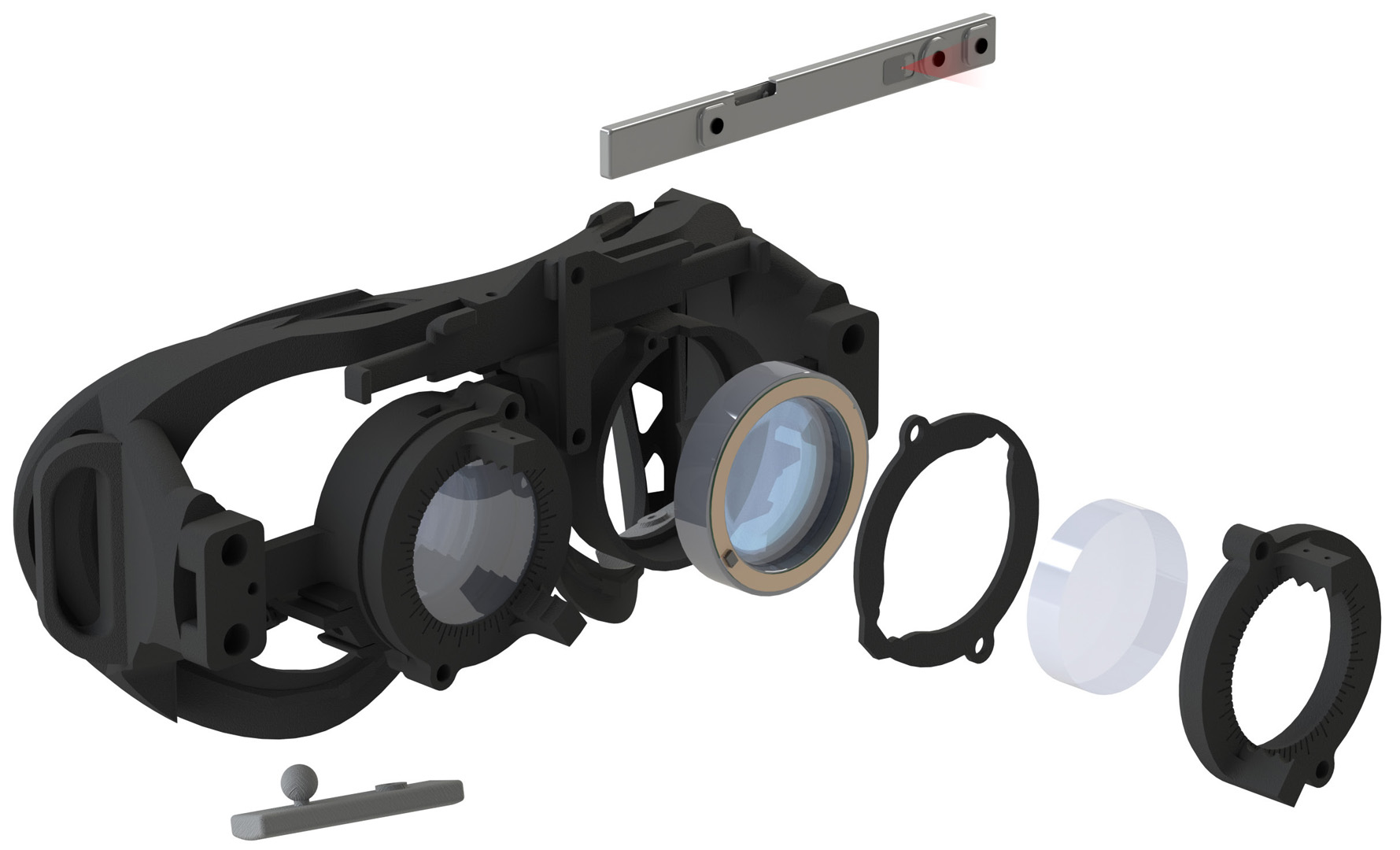“Autofocals: evaluating gaze-contingent eyeglasses for presbyopes”
Conference:
Type(s):
Entry Number: 55
Title:
- Autofocals: evaluating gaze-contingent eyeglasses for presbyopes
Presenter(s)/Author(s):
Abstract:
Presbyopia, the loss of accommodation due to the stiffening of the crystalline lens in the eye, affects nearly 20% of the population worldwide. Traditional forms of presbyopia correction use fixed focal elements that inherently trade off field of view or stereo vision for a greater range of distances at which the wearer can see clearly. However, none of these offer the same natural refocusing enjoyed in youth. In this work, we built a new type of presbyopia correction, dubbed “autofocal,” which externally mimics the natural accommodation response of the eye by combining data from eye trackers and a depth sensor, and then automatically drives focus-tunable lenses. We evaluated autofocals against progressives and mono-vision in a user study; compared to these traditional corrections, autofocals maintain better visual acuity at all tested distances, allow for faster and more accurate visual task performance, and are easier to refocus with for a majority of wearers.
References:
`
Arthur Back, Timothy Grant, and Narelle Hine. 1992. Comparative visual performance of three presbyopic contact lens corrections. Optom. Vis. Sci. 69, 6 (1992), 474–480.
Hung-Shan Chen, Ming-Syuan Chen, and Yi-Hsin Lin. 2014. Electrically Tunable Ophthalmic Lenses for Myopia and Presbyopia Using Liquid Crystals. Mol Cryst Liq Cryst 596, 1 (2014), 88–96.
Alexander Duane. 1912. Normal values of the accommodation at all ages. Journal of the American Medical Association 59, 12 (1912), 1010–1013.
Paul Erickson and Clifton Schor. 1990. Visual function with presbyopic contact lens correction. Optom. Vis. Sci. 67, 1 (1990), 22–28.
Michael G Harris, James E Sheedy, and Cheslyn M Gan. 1992. Vision and task performance with monovision and diffractive bifocal contact lenses. Optom. Vis. Sci. 69, 8 (1992), 609–614.
Nazmul Hasan, Aishwaryadev Banerjee, Hanseup Kim, and Carlos H Mastrangelo. 2017a. Tunable-focus lens for adaptive eyeglasses. Opt. Express 25, 2 (2017).
Nazmul Hasan, Mohit Karkhanis, Fariha Khan, Tridib Ghosh, Hanseup Kim, and Carlos H Mastrangelo. 2017b. Adaptive Optics for Autofocusing Eyeglasses. In Applied Industrial Optics: Spectroscopy, Imaging and Metrology. OSA, AM3A–1.
Brien A Holden, Timothy R Fricke, S May Ho, Reg Wong, Gerhard Schlenther, Sonja Cronjé, Anthea Burnett, Eric Papas, Kovin S Naidoo, and Kevin D Frick. 2008. Global vision impairment due to uncorrected presbyopia. Arch Ophthalmol 126, 12 (2008).
Robert Konrad, Emily A. Cooper, and Gordon Wetzstein. 2016. Novel optical configurations for virtual reality: Evaluating user preference and performance with focus-tunable and monovision near-eye displays. In Proc. SIGCHI.
Guoqiang Li, David L Mathine, Pouria Valley, Pekka Äyräs, Joshua N Haddock, MS Giridhar, Gregory Williby, Jim Schwiegerling, Gerald R Meredith, Bernard Kippelen, et al. 2006. Switchable electro-optic diffractive lens with high efficiency for ophthalmic applications. PNAS 103, 16 (2006), 6100–6104.
Yi-Hsin Lin and Hung-Shan Chen. 2013. Electrically tunable-focusing and polarizer-free liquid crystal lenses for ophthalmic applications. Opt. Express 21, 8 (2013).
Yi-Hsin Lin, Hung-Shan Chen, and Ming-Syuan Chen. 2014. Electrically Tunable Liquid Crystal Lenses and Applications. Mol Cryst Liq Cryst 596, 1 (2014), 12–21.
Nitish Padmanaban, Robert Konrad, Tal Stramer, Emily A. Cooper, and Gordon Wetzstein. 2017. Optimizing virtual reality for all users through gaze-contingent and adaptive focus displays. PNAS 114 (2017), 2183–2188. Issue 9.
Nitish Padmanaban, Robert Konrad, and Gordon Wetzstein. 2019. Autofocals: Evaluating Gaze-Contingent Eyeglasses for Presbyopes. Science Advances (2019).
James E Sheedy, Michael G Harris, Matthew R Bronge, Sharon M Joe, and Melanie A Mook. 1991. Task and visual performance with concentric bifocal contact lenses. Optom. Vis. Sci. 68, 7 (1991), 537–541.
James E Sheedy, Michael G Harris, Leslie Busby, Eileen Chan, and Irene Koga. 1988. Monovision contact lens wear and occupational task performance. Optom. Vis. Sci. 65, 1 (1988), 14–18.
Lihui Wang, Alvaro Cassinelli, Hiromasa Oku, and Masatoshi Ishikawa. 2014. A pair of diopter-adjustable eyeglasses for presbyopia correction. In Proc. SPIE, Vol. 9193..
Keyword(s):
Acknowledgements:
This project was supported by Intel, a Sloan Fellowship, the Okawa Foundation, the National Science Foundation (NSF; 1553333, 1839974), an NSF Graduate Research Fellowship, and an NVIDIA Graduate Fellowship.




